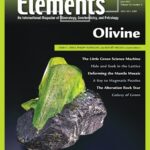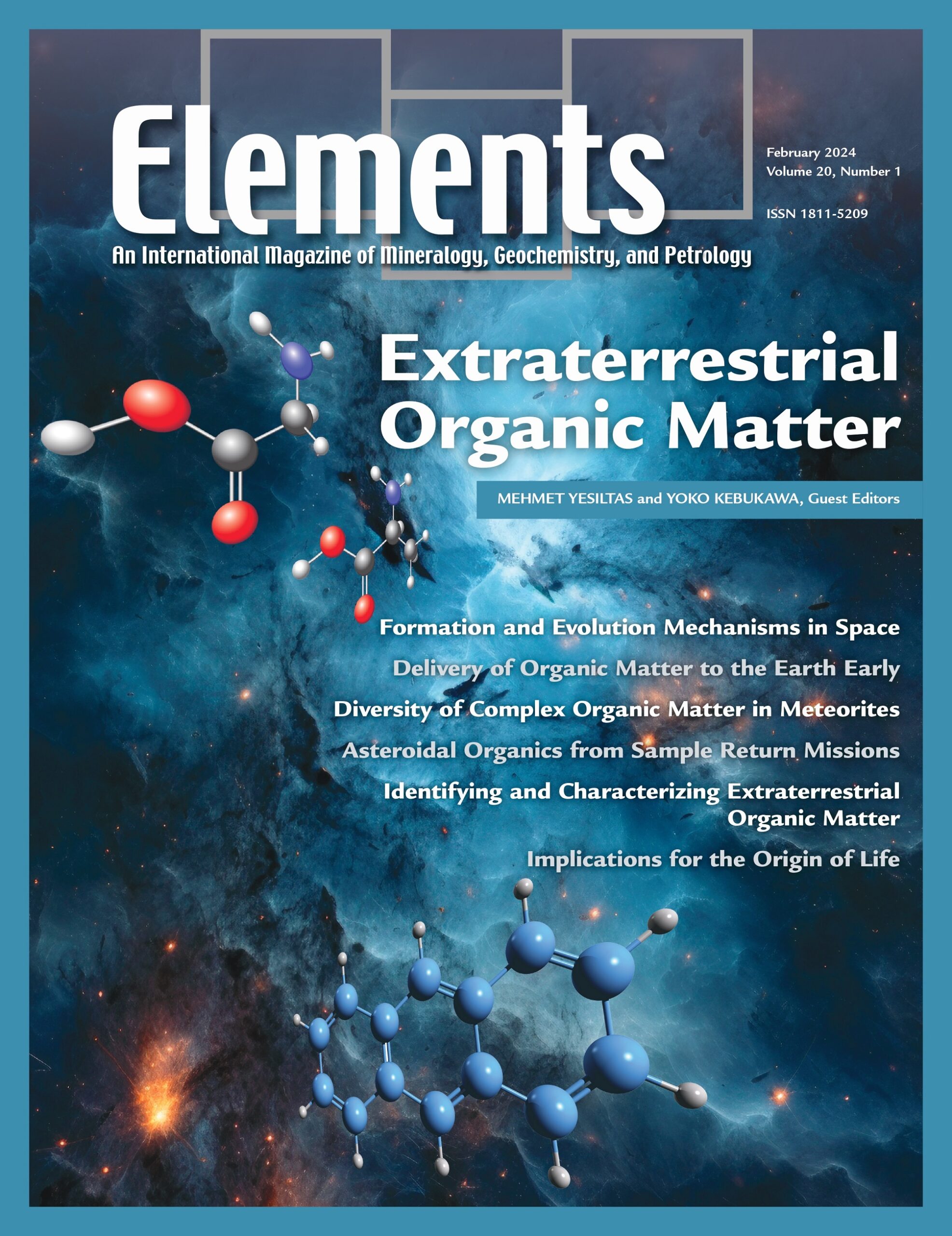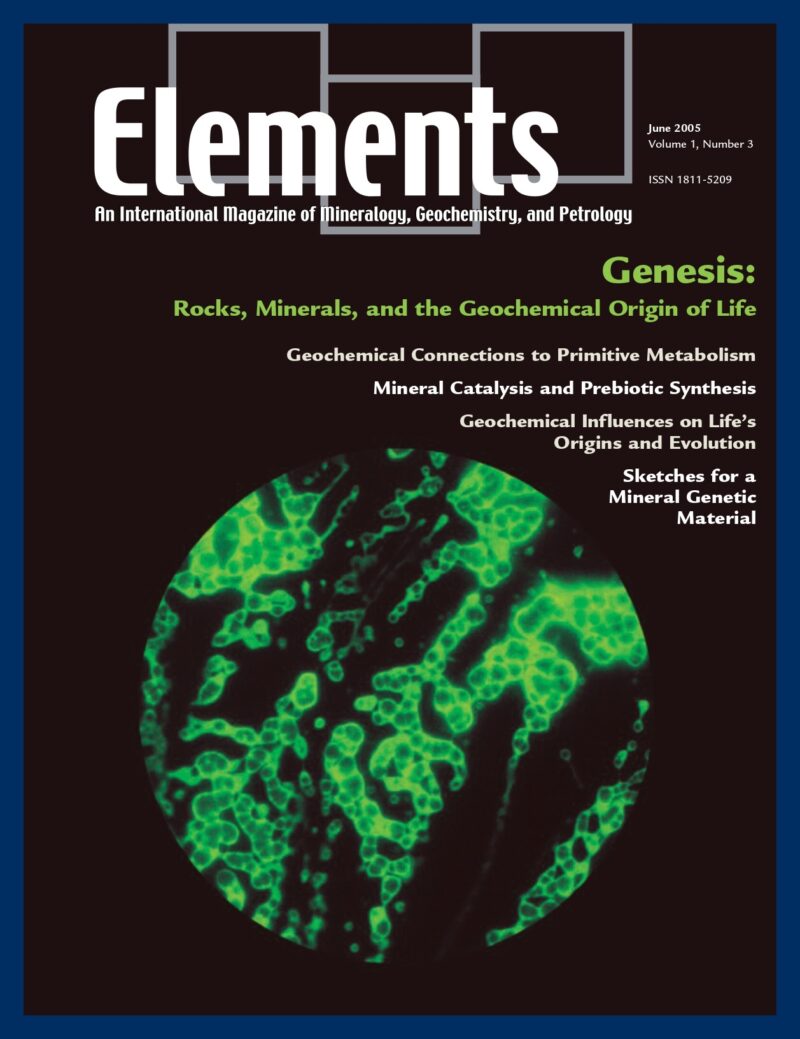
Olivine, June 2023, Vol. 19, No. 3
June 28, 2024
Elements Joint Society Calendar (2025–2026)
July 17, 2024Extraterrestrial Organic Matter, January 2024, Vol. 20, No. 1
$20.00
Extraterrestrial organic matter is found in various extraterrestrial environments and in various forms. It forms in a variety of locations through different mechanisms in space.
Extraterrestrial Organic Matter
January 2024, Vol. 20, No. 1
Extraterrestrial organic matter is found in various extraterrestrial environments and in various forms. It forms in a variety of locations through different mechanisms in space. As such, its nature, distribution, formation mechanisms and locations are of particular interest. Some organic molecules are even considered as key players for the emergence of life on Earth and possibly beyond. Therefore, their detection and characterization can contribute to the understanding of the early solar system evolution as well as the origin of life. Despite decades of work and research, there are still many questions and unknowns on this topic. The aim of this issue of Elements is to offer an overview of the concept of extraterrestrial organic matter as well as the latest scientific findings.
Why You’ll Love Elements Magazine:
- Expert Contributors: Articles written by renowned researchers in the field of geoscience.
- Engaging Content: Join a community of readers who are passionate about Elements.
- Exceptional Quality: Each issue is printed on high-quality paper with stunning visuals and detailed illustrations that bring complex scientific concepts to life.
Order your copy of the January 2024 issue of Elements magazine today and delve into extraterrestrial organic matter.
Related products
-
Deep Earth And Mineral Physics, June 2008, Vol. 4, No. 3
$20.00The field of high-pressure mineral physics is central to our understanding of the Earth’s interior and its evolution. It is also a field that is rapidly advancing.
-
Early Earth, August 2006, Vol. 2, No. 4
$20.00The earliest Earth was a strange inhospitable world, yet transitions occurred culminating in the evolution of life within the first billion years. The preservation of a sparse and ambiguous rock record has encouraged debate.
-
Genesis: Rocks, Minerals, And The Geochemical Origin Of Life, June 2005, Vol. 1, No. 3
$20.00Few scientific questions so capture the public imagination, or provoke such lively debate, as how life on Earth emerged. In this issue of Elements, four of the most creative minds in origins research present their original insights on the geochemical origins of life.




